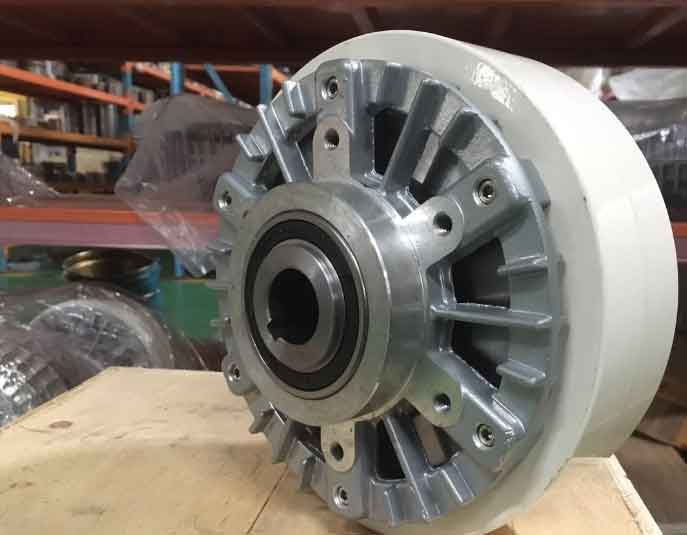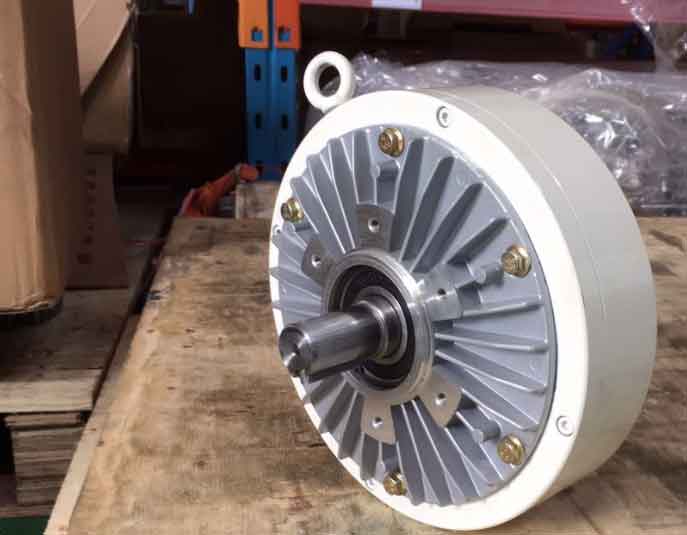Printing technology has come a long way, with modern printing machines offering exceptional precision and speed. A crucial component contributing to the accuracy and control in these machines is the Magnetic Particle Brake.
Printing machines are relied upon for a wide array of applications, from producing newspapers to packaging materials and intricate designs on various surfaces. The Magnetic Particle Brake plays a pivotal role in achieving consistent and precise results.
Top 3 Applications Of Magnetic Particle Brakes In The Printing Industry
- Web Printing: In web offset and flexographic printing, where the material is printed as a continuous roll, Magnetic Particle Brakes ensure that the material is pulled through the press at a constant tension, preventing wrinkles or misalignment.
- Sheet-fed Printing: For sheet-fed printing, such as in commercial printing and packaging, these brakes control the tension and feed of individual sheets, ensuring precise registration and image quality.
- Variable Data Printing: In applications like variable data printing, Magnetic Particle Brakes help maintain the tension required for accurate printing of changing information on labels and packaging.
How Magnetic Particle Brakes Work
Magnetic Particle Brakes operate on the principle of controlled slippage. The key components of these brakes include a rotor, stator, and magnetic particles suspended in a special oil or fluid.
Components of a Magnetic Particle Brake
| Component | Description |
|---|---|
| Rotor | The output shaft connected to the machine. It spins freely within the stator. |
| Stator | The stationary part of the brake, which surrounds the rotor. It is responsible for creating the magnetic field. |
| Magnetic Particles | Suspended in a special oil or fluid, these particles transmit torque from the stator to the rotor. |

Top 5 Benefits Of Magnetic Particle Brakes
- Precise Control: Magnetic Particle Brakes offer precise control over tension and torque, ensuring consistent print quality.
- Responsive: These brakes respond quickly to changes in tension, making them suitable for high-speed printing.
- Maintenance-Friendly: They require minimal maintenance, reducing downtime and associated costs.
- Compact Design: The compact design of Magnetic Particle Brakes makes them suitable for various printing machine configurations.
- Energy Efficiency: These brakes only consume power when engaged, making them energy-efficient.
Three Major Limitations In The Use Of Magnetic Particle Brakes
While Magnetic Particle Brakes offer many advantages, there are also some challenges to consider:
- Wear and Tear: Over time, the friction between magnetic particles can lead to wear and a reduction in braking performance.
- Temperature Sensitivity: These brakes can be affected by extreme temperatures, which may require additional cooling or heating mechanisms.
- Initial Costs: Magnetic Particle Brakes may have higher initial costs compared to some other braking methods.
The printing industry continues to evolve, with a focus on improving speed, quality, and sustainability. Magnetic Particle Brakes are likely to remain relevant due to their ability to provide precise control and maintain tension. However, ongoing research aims to address their limitations, including wear and tear, by developing more robust materials and designs.
Conclusion
The use of Magnetic Particle Brakes in printing machines has greatly contributed to the precision and efficiency of modern printing processes. Their ability to provide precise control over tension and torque, quick responsiveness, and energy efficiency make them a valuable asset in the printing industry. As technology advances, we can expect further improvements and innovations in the world of Magnetic Particle Brakes, ensuring that they continue to play a pivotal role in delivering high-quality printed materials for years to come.
Incorporating Magnetic Particle Brakes into printing machines is a strategic decision for achieving the desired printing quality and accuracy. These brakes are an integral part of the sophisticated mechanisms that enable the printing of newspapers, labels, packaging materials, and much more with precision and consistency.
